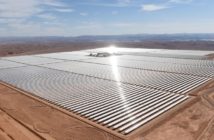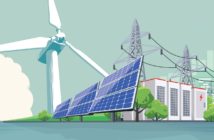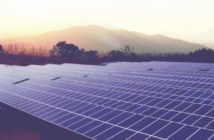NEW YORK TIMES
GREEN BUSINESS
Jessica Kourkounis for The New York Times
“I hope they call us back because they are really, really good jobs,” said Miguel Orobiyi, who was furloughed from Gamesa.
By DIANE CARDWELL
FAIRLESS HILLS, Pa. — Last month, Gamesa, a major maker of wind turbines, completed the first significant order of its latest innovation: a camper-size box that can capture the energy of slow winds, potentially opening new parts of the country to wind power.
A blog about energy and the environment.
Go to Blog »
Enlarge This Image
Jessica Kourkounis for The New York Times
Wind turbine hubs being assembled by Gamesa in Fairless Hills, Pa., where most workers have been furloughed.
Enlarge This Image
Jessica Kourkounis for The New York Times
Vending machines are used to distribute tools at the Gamesa plant, built on the grounds of a shuttered U.S. Steel factory.
Enlarge This Image
Jessica Kourkounis for The New York Times
Workers prepare the bottom casing of a nacelle, a camper-size device that is designed to capture energy from slow winds.
Readers’ Comments
Share your thoughts.
Post a Comment »
Read All Comments (484) »
But by the time the last of the devices, worth more than $1.25 million, was hitched to a rail car, Gamesa had furloughed 92 of the 115 workers who made them.
“We are all really sad,” said Miguel Orobiyi, 34, who worked as a mechanical assembler at the Gamesa plant for nearly five years. “I hope they call us back because they are really, really good jobs.”
Similar cuts are happening throughout the American wind sector, which includes hundreds of manufacturers, from multinationals that make giant windmills to smaller local manufacturers that supply specialty steel or bolts. In recent months, companies have announced almost 1,700 layoffs.
At its peak in 2008 and 2009, the industry employed about 85,000 people, according to the American Wind Energy Association, the industry’s principal trade group.
About 10,000 of those jobs have disappeared since, according to the association, as wind companies have been buffeted by weak demand for electricity, stiff competition from cheap natural gas and cheaper options from Asian competitors. Chinese manufacturers, who can often underprice goods because of generous state subsidies, have moved into the American market and have become an issue in the larger trade tensions between the countries. In July, the United States Commerce Department imposed tariffs on steel turbine towers from China after finding that manufacturers had been selling them for less than the cost of production.
And now, on top of the business challenges, the industry is facing a big political problem in Washington: the Dec. 31 expiration of a federal tax credit that makes wind power more competitive with other sources of electricity.
The tax break, which costs about $1 billion a year, has been periodically renewed by Congress with support from both parties. This year, however, it has become a wedge issue in the presidential contest. President Obama has traveled to wind-heavy swing states like Iowa to tout his support for the subsidy. Mitt Romney, the Republican nominee, has said he opposes the wind credit, and that has galvanized Republicans in Congress against it, perhaps dooming any extension or at least delaying it until after the election despite a last-ditch lobbying effort from proponents this week.
Opponents argue that the industry has had long enough to wean itself from the subsidy and, with wind representing a small percentage of total electricity generation, the taxpayers’ investment has yielded an insufficient return.
“Big Wind has had extension after extension after extension,” said Benjamin Cole, a spokesman for the American Energy Alliance, a group partly financed byoil interests that has been lobbying against the credit in Washington. “The government shouldn’t be continuing to prop up industries that never seem to be able to get off their training wheels.”
But without the tax credit in place, the wind business “falls off a cliff,” said Ryan Wiser, a staff scientist at Lawrence Berkeley National Laboratory who studies the market potential of renewable electricity sources.
The industry’s precariousness was apparent a few weeks ago at the Gamesa factory, as a crew loaded the guts of the company’s newest model of the component, a device known as a nacelle, into its fiberglass shell. Only 50 completed nacelles awaited pickup in a yard once filled with three times as many, most of the production line stood idle, and shelves rated to hold 7,270 pounds of parts and equipment lay bare.
“We’ve done a lot to get really efficient here,” said Tom Bell, the manager of the plant, which was built on the grounds of a shuttered U.S. Steel factory that was once a bedrock of the local economy. “Now we just need a few more orders.”
Industry executives and analysts say that the looming end of the production tax credit, which subsidizes wind power by 2.2 cents a kilowatt-hour, has made project developers skittish about investing or going forward. That reluctance has rippled through the supply chain.
On Tuesday, Siemens, the German-based turbine-maker, announced it would lay off 945 workers in Kansas, Iowa and Florida, including part-timers. Last week Katana Summit, a tower manufacturer, said it would shut down operations in Nebraska and Washington if it could not find a buyer. Vestas, the world’s largest turbine manufacturer, with operations in Colorado and Texas, recently laid off 1,400 workers globally on top of 2,300 layoffs announced earlier this year. Clipper Windpower, with manufacturing in Iowa, is reducing its staff by a third, to 376 from 550. DMI Industries, another tower producer, is planning to lay off 167 workers in Tulsa by November.
Wind industry jobs range in pay from about $30,000 a year for assemblers to almost $100,000 a year for engineers, according to the Bureau of Labor Statistics.
The industry’s contraction follows several years of sustained growth — with a few hiccups during the downturn — that has helped wind power edge closer to the cost of electricity from conventional fuels. The number of turbine manufacturers grew to nine in 2010 from just one in 2005, according to the United States International Trade Commission, while the number of component makers increased tenfold in roughly the same period to almost 400, according to the Congressional Research Service.
Aside from Clipper Windpower and General Electric, most of the turbine manufacturers operating in the United States have headquarters overseas, especially in Europe, where wind power took off first, spurred by clean energy policies and generous subsidies.
As the United States put in place mandates and subsidies of its own, several large outfits, including the Spanish company Gamesa, set up shop stateside. Because the turbines, made of roughly 8,000 parts, are so large and heavy — blades half the length of a football field, towers rising hundreds of feet in the air, motors weighing in the tons — they are difficult and expensive to transport.
As a result, manufacturers invested billions to develop a supply chain in the United States. More than 100 companies contribute parts to Gamesa’s 75-ton devices, which are the most expensive and complex major components of high-tech windmills.
Some longtime Gamesa partners like Hine Hydraulics followed the company from Spain, investing millions in building plants in the United States and sending workers to Spain for expensive training.
Rich Miller, who works for Hine in Quakertown, Pa., said that when he went to Spain to learn how to build and test power units for its hydraulic systems, it was his first trip out of the country.
“That was quite an experience in itself,” said Mr. Miller, who is 58, adding that he probably learned more in four years at Hine than at previous jobs.
Now he worries about having to move on. “Hopefully it will go back to the way things were.” Losing his job at his age, he said, “would be devastating for me.”
.






